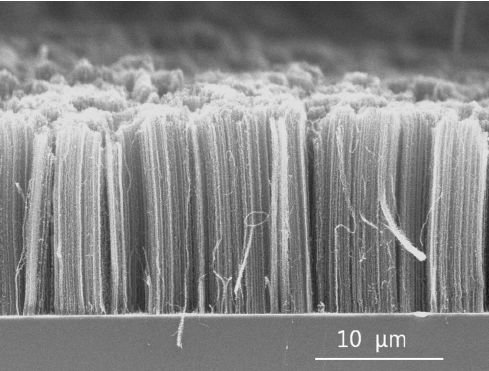Carbon nanotubes and other tiny particles are becoming more and more part of consumer goods. They are also found in organisms from the lowest to the highest food chain.

Nanotechnology is driving a new industrial revolution. The process constructionof materials on an incredibly small scale (a human hair is about 80.000 nanometers wide) has led to developments in everything from electronics and paints to cosmetics and clothing. However, their small size also poses a threat as a new type of pollution. According to new research, nanomaterials can easily end up in the environment, enter living organisms and pass through the food chain.
In an article that published in the journal Nature Communications, the researchers detected nanomaterials (which can range in size from 1 to 100 nanometers) throughout the food chain. Starting with locating the nanomaterials in the algae and then following these materials as they moved to the zooplankton that the algae ate and then to the fish that ate the zooplankton. At each step, the nanoparticles changed in size and shape and spread throughout the body, penetrating the cells and entering the organs. In fish, nanoparticles accumulate in the brain.
Fazel A. Monikh, lead author and researcher at the University of Eastern Finland, is not exactly sure why these nanoparticles accumulate in fish brains, but says the situation is worrying, especially since these nanomaterials are often not listed as ingredients in products. , or you may not know they are in the product you are buying. And because there is no universally accepted definition of what nanomaterials are, it makes them difficult to label or regulate.
These nanomaterials who entered the food chain are different from microplastics , pieces less than five millimeters long and nanoplastics, even from fragments smaller than 0,001 millimeters. This type of pollution occurs when plastic enters an environment and degrades into smaller and smaller pieces.
Nanomaterials are something completely different, as they are objects that people design to be so small. Example the carbon nanotubes which are stronger than steel but lighter than aluminum, used in touch screens and solar cells or titanium dioxide nanoparticles used in sunscreen to help the product blend into our skin.

The regulation of nanoparticles is difficult because there is not yet a good enough test to show us the percentage of their presence. Measuring the presence of nanoparticles by mass, as we do for the detection of chemicals, is not enough, because it does not take into account their physical composition and structure. For his research, Monikh developed a method for isolating and extracting nanoparticles from organisms' tissue, which allowed researchers to measure each type of nanomaterial.
Companies are rushing to incorporate this technology into their products, but their risk is not yet fully understood, so regulatory frameworks are beginning to emerge. "This material has shape, size, physical boundaries, and different things pile up on it," says Monikh. "The existing protocol has no answer for such materials because the protocols are for chemicals and chemicals are uniform”.
We will need more work to understand the potential damage, if any, that the material may cause. Monikh and his team hope that responsible politicians will also address this issue and start implementing regulations on the use of nanomaterials, especially as we look forward to learning more about them.
"We can not stop this new revolution, we can never fight companies, but what we can do is plan. safe "Nanomaterials, because if we know what the results are, we can design them to be safe," he says. "We have to tell the companies: Do not rush, just wait. "Let's see first what the danger is."





